Voices of the Lake: Imagining the Future of Lake Monona’s Waterfront
Sasaki designers reveal their proposal for the Lake Monona Waterfront Design Challenge in Madison, WI
 Sasaki
Sasaki
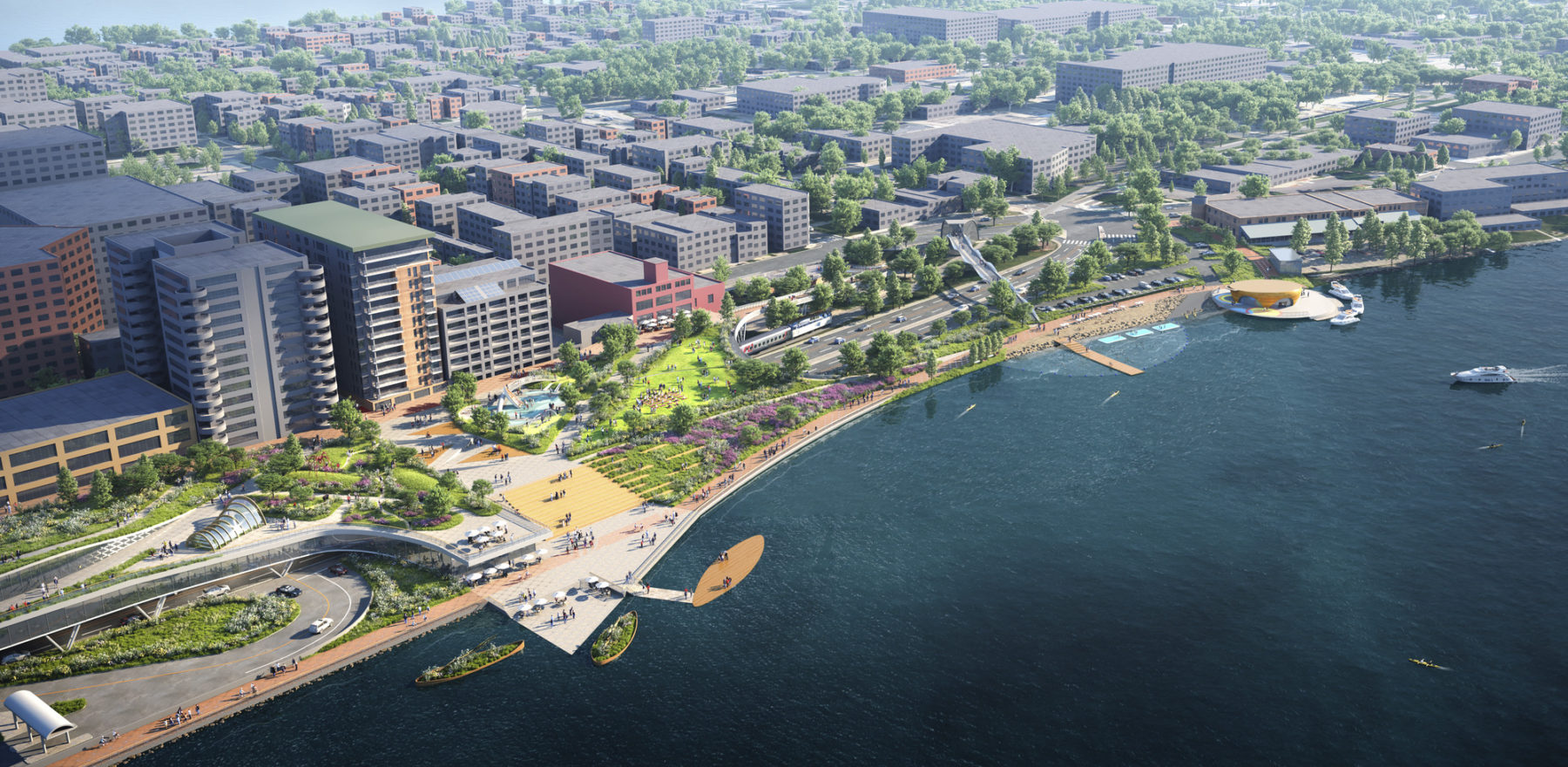
Sasaki is thrilled to have been selected to redesign Lake Monona’s urban waterfront in Madison, WI. After an intensive design process and four month review period, the Lake Monona Waterfront Ad-hoc Committee selected Sasaki to lead this once-in-a-generation design opportunity.
Sasaki was shortlisted alongside two other firms in the competition, and quickly got to work engaging with the Madison community to understand their aspirations for a new waterfront. Sasaki’s winning, final proposal, “Voices of the Lake: Monona’s Waterfront,” will create an accessible, activated waterfront and establish a protected shoreline for wildlife to flourish.
In a unanimous vote Wednesday night, the Ad-Hoc committee chose Sasaki because of the plan’s commitment to sustainability, history, and incorporating public feedback. Leading up to the committee’s decision, a community survey with a record-breaking 2,400+ responses favored Sasaki’s design in every category.
“The isthmus of Madison is a very unique environment and I see Sasaki as the best way to honor this special area,” said one of the survey respondents. “I believe Madison residents would get the most out of the recreational and ecological opportunities that Sasaki will create.”
Sasaki’s multidisciplinary team of local and national landscape architects, architects, engineers, and ecologists, including GRAEF and Moffatt & Nichol, have closely collaborated to create an ambitious and feasible master plan. Through on-site visits, in-depth conversations, analysis of community feedback, and technical due diligence, the design team has envisioned a lake edge that amplifies all voices.
“Sasaki did the little things,” Raj Shukla told Channel 3000. “They paid attention to the peculiarities of this town and they showed up.”
The design lays out plans for pedestrian infrastructure that creates a stronger connection to the core of downtown and to the south neighborhoods such as Bay View, Bay Creek and Alliant Energy Center. Improved intersections, widened walking paths, and separated bike lanes will create a new waterfront that is accessible for all people. Destinations at Law Park, S. Hamilton Street, the John Nolen Causeway, and Olin Park bring new programming which will activate Lake Monona’s waterfront throughout the whole year.
“The best designs come from listening and being flexible,” says Anna Cawrse, principal and co-director of Sasaki Denver. “We understand the push and pull of design and ‘real life,’ and we thrive on that tension. Ultimately, the final design needs to meet the demands of the community priorities, technical implementation, and phasing/funding. We are thrilled to move forward with the community of Madison to create Lake Monona’s new waterfront.”
“The best designs come from listening and being flexible.”
-Anna Cawrse, principal and co-director of Sasaki Denver
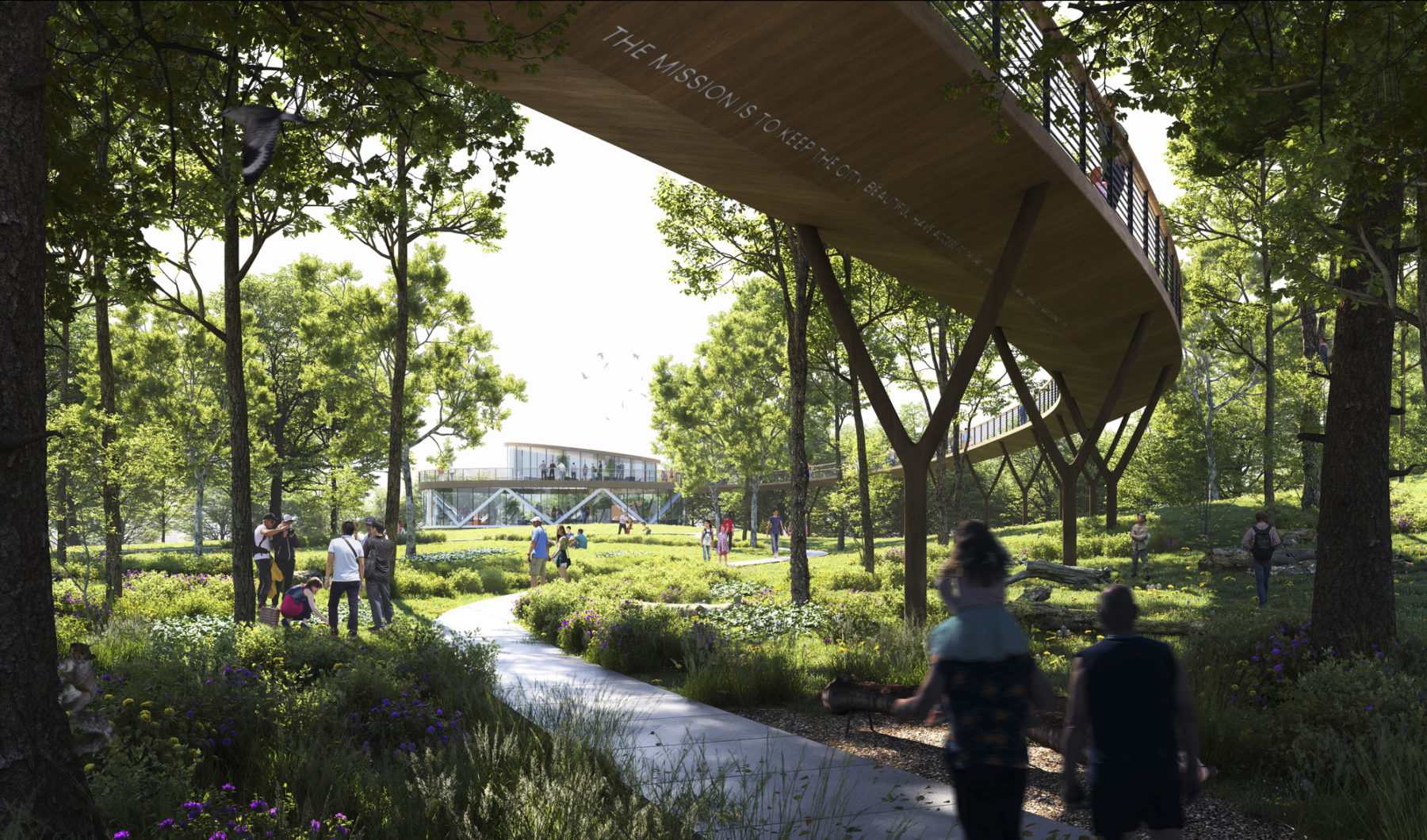
One component of the design, Olin Overlook, creates a green oasis supported by a canopy walk and nature center
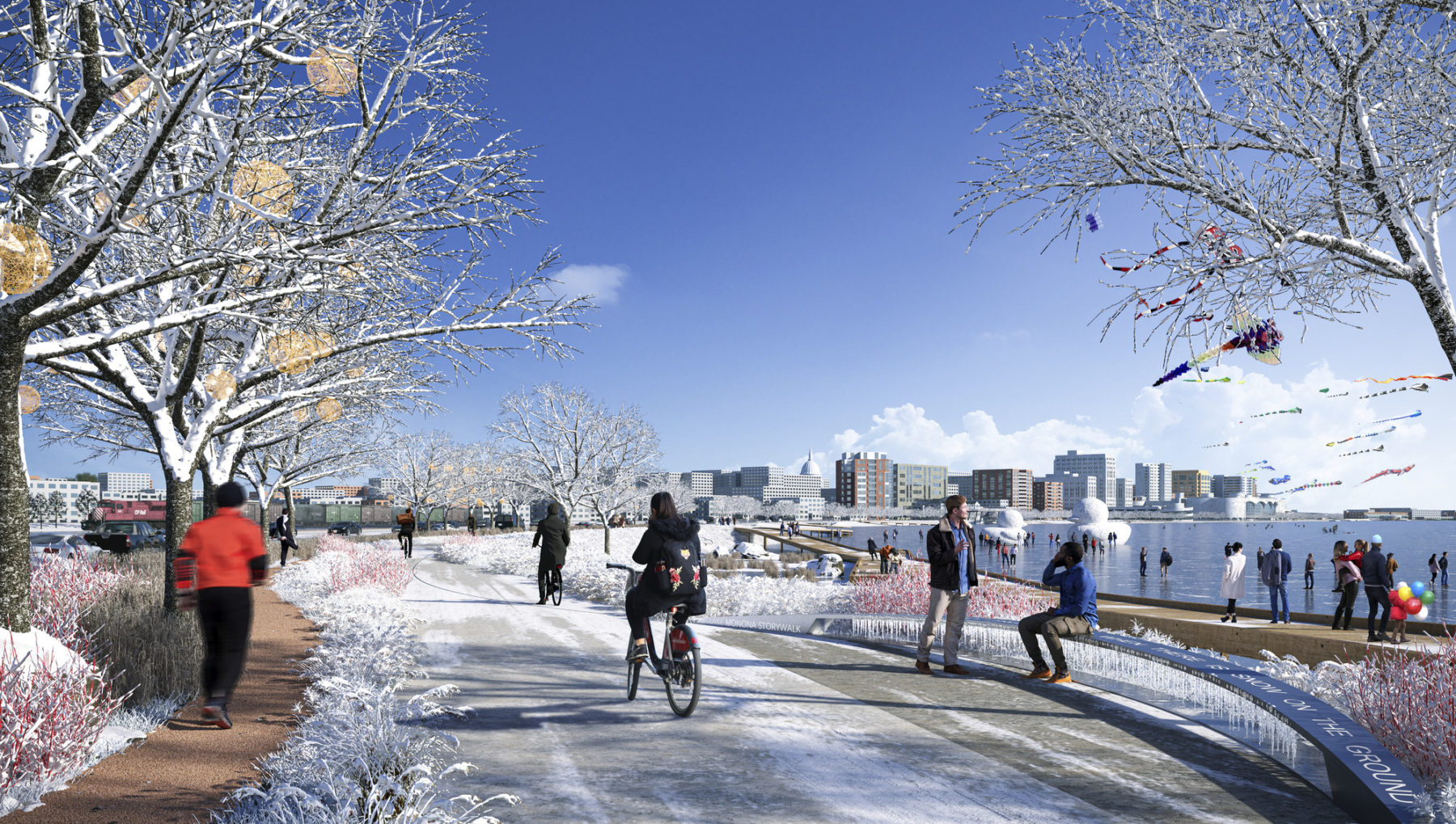
Community Causeway prioritizes trails and boardwalks for visitors to travel at all speeds
The Ad-Hoc committee was impressed by Sasaki’s community outreach efforts, ecological approach, and connection to the Ho-Chunk Nation.
Lake Monona, a freshwater lake, became home to the first human inhabitants of the area, the Ho-Chunk Nation. One of the tenets of Sasaki’s design is to learn from how the Ho-Chunk Nation has cared for the lake. In turn, Sasaki developed a design that prioritizes lake health and makes the space accessible to all of its users–human or otherwise.
“I think [Sasaki has] done a great job connecting with residents,” Allen Arntsen, chair of the ad hoc committee, told the Cap Times. “They did a lot of outreach to the Ho-Chunk Nation, EQT by Design, the Mad-City Ski Team, just a lot of connecting. I think what people really pointed to was the focus on the health of the lake. The water quality and the aquatic habitat. They put the lake’s health first. That stress was really appreciated and people really appreciated the depths of their outreach to the Ho-Chunk.”
Sasaki’s vision aims to revive the waterfront by establishing an ecologically vibrant living edge that will provide a habitat for amphibious life. Green infrastructure, like rain gardens and wetlands, will capture and clean stormwater before it enters Lake Monona.
“Sasaki put the lake’s health first.”
-Allen Arntsen, chair of the Ad Hoc committee
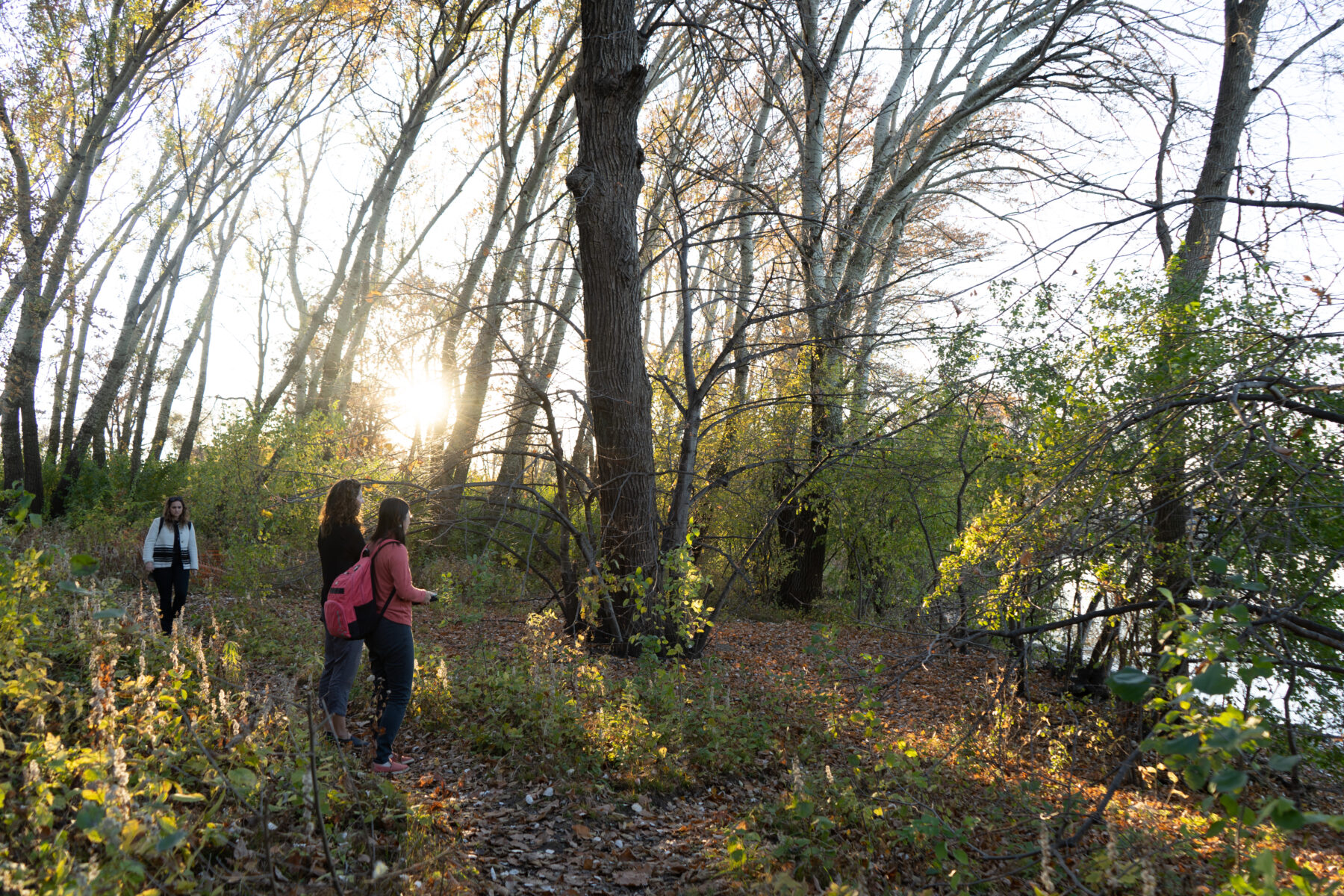
Sasaki designers exploring the shoreline on a site visit
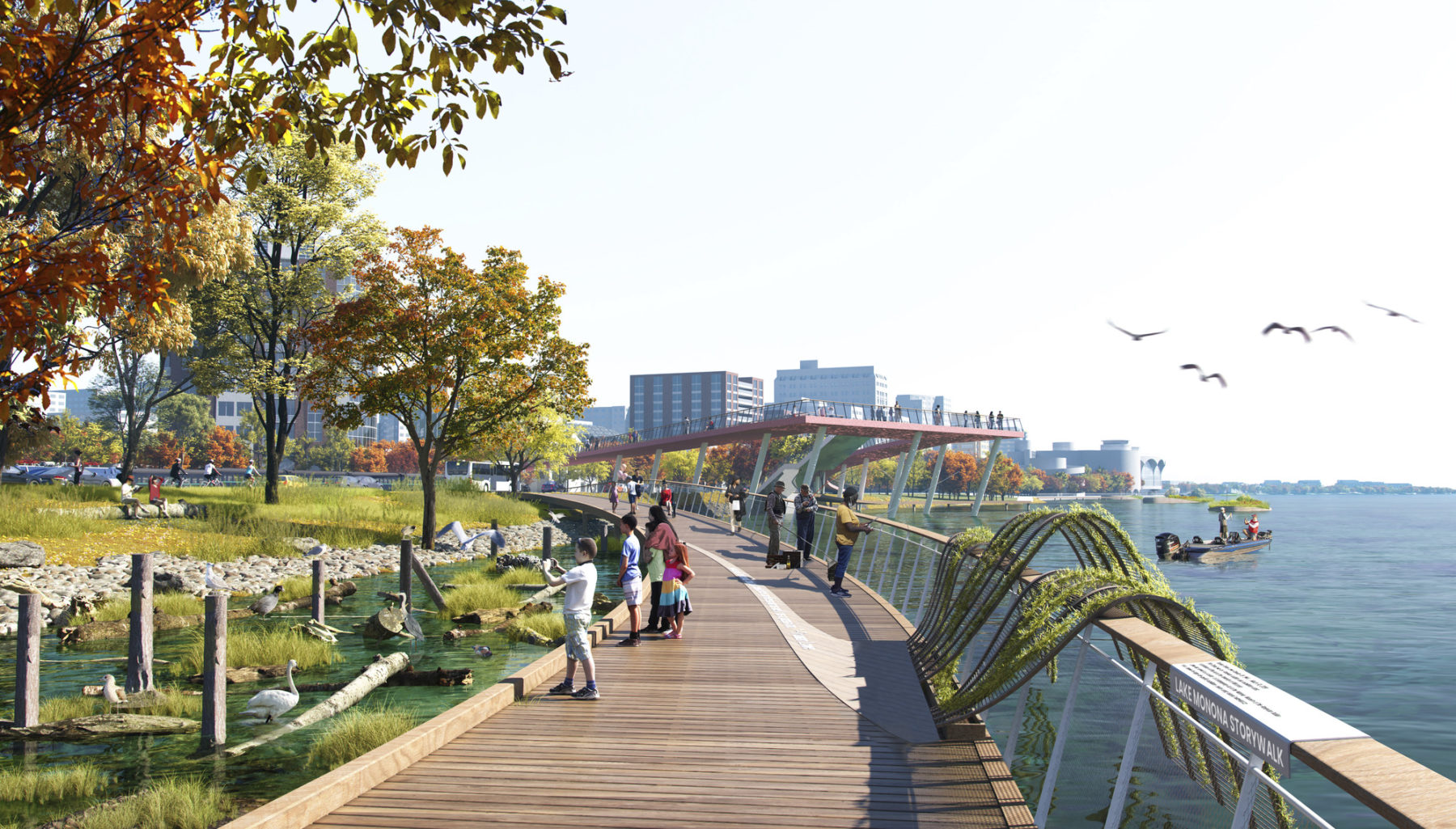
The design imagines an ecologically vibrant living edge
“The shoreline enhancements will frame this priceless resource, showcasing Lake Monona to its residents and visitors alike while demonstrating how to be good stewards of one our most treasured natural resources,” says Ed Freer, senior landscape architect with GRAEF.
Before the community-wide survey was launched to garner feedback on all three final designs, the City of Madison hosted a public kick-off, a mid-term presentation, and a final public meeting that attracted more than 300 in-person attendees.
“Madison provided so much feedback and support throughout the entire design process,” says Lanmuzhi Yang, senior landscape architect at Sasaki. “My favorite part of this project is that it has the potential to truly amplify all voices. This journey has just begun, and we are excited to work together with the city and community to turn the vision to reality.”
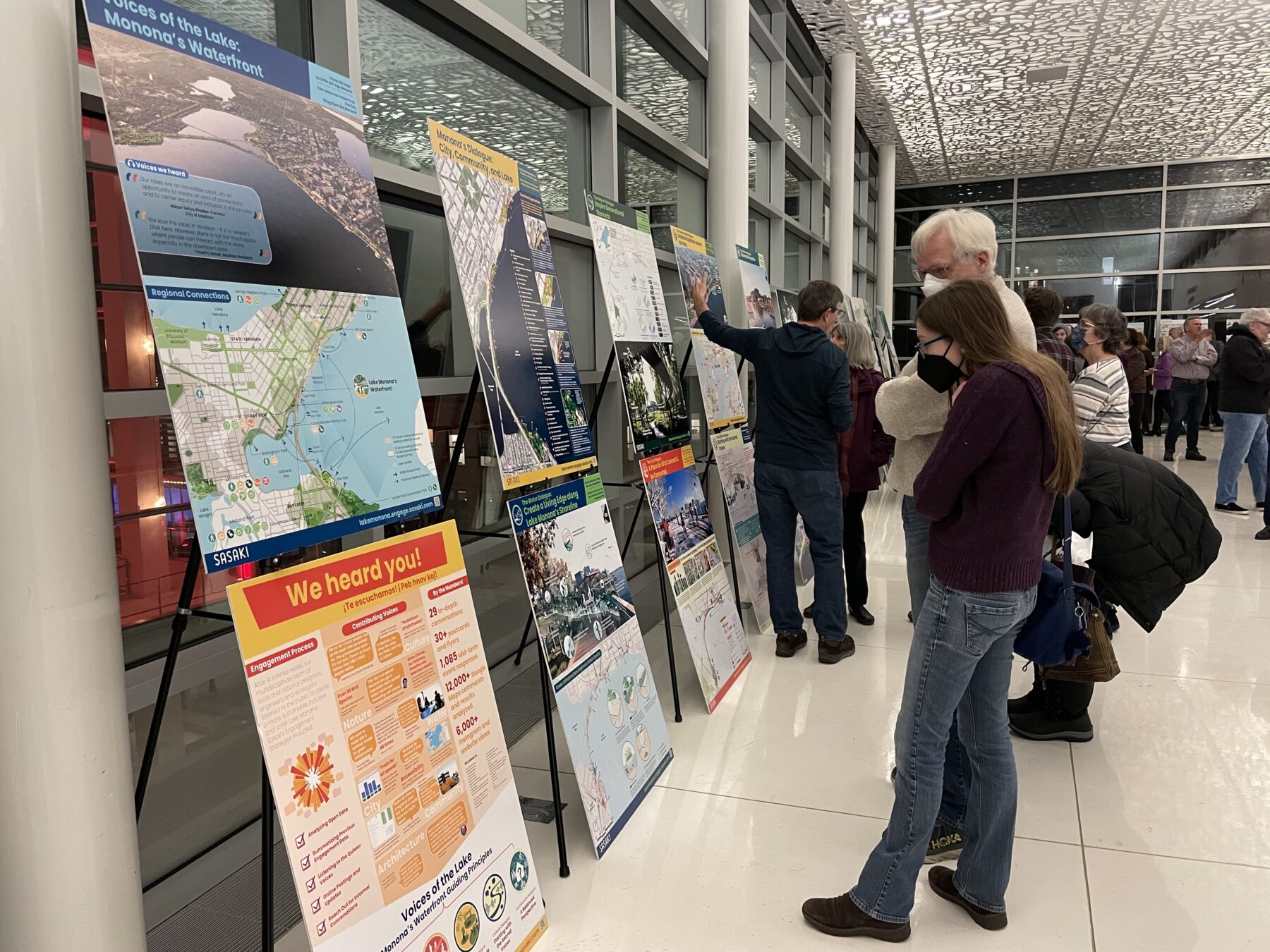
Sasaki designers had the opportunity to chat with the Madison community about the design proposal at x number of public meetings
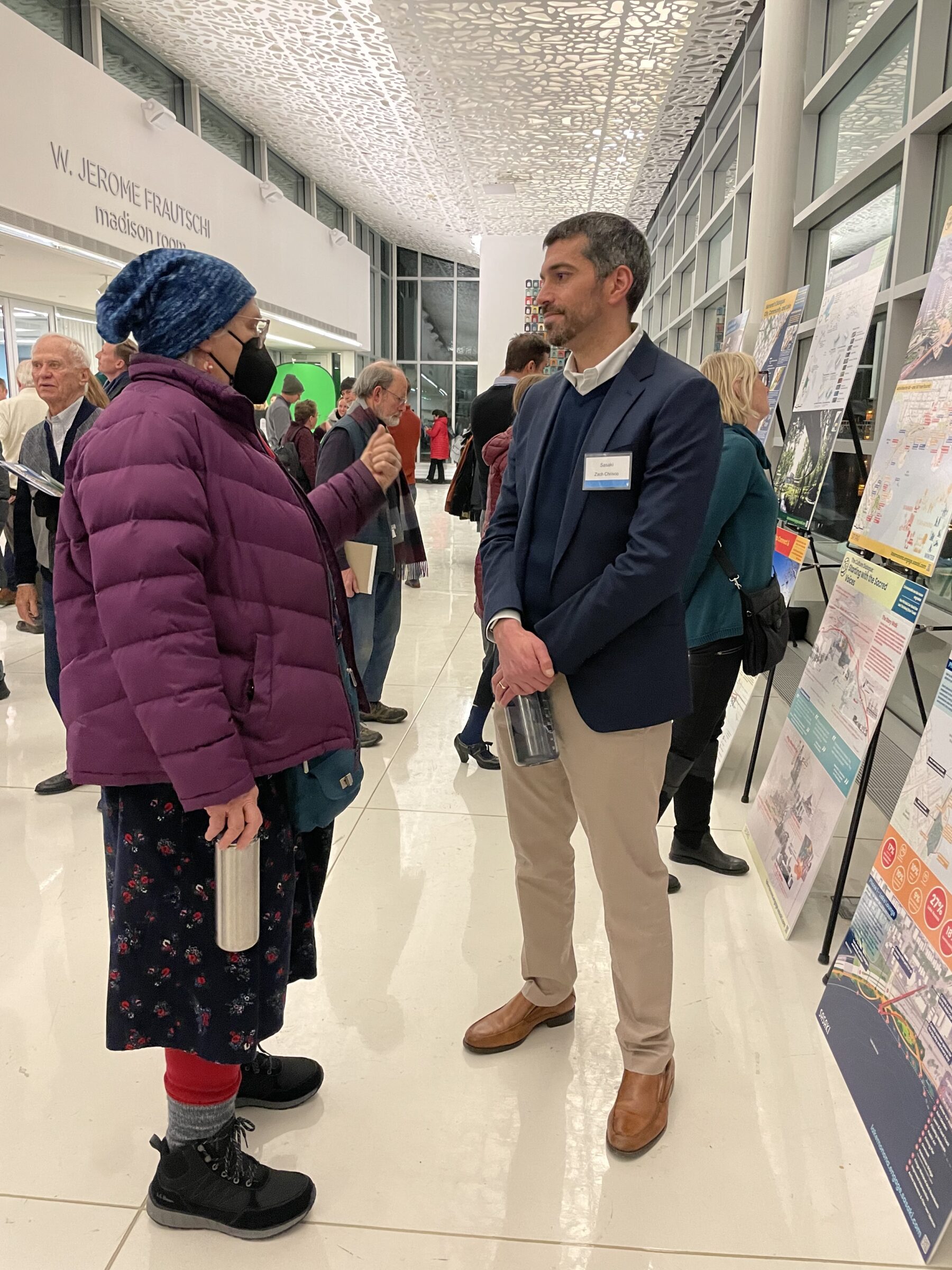
“All 3 firms listened to Madison responses, but Sasaki did so in real time,” said one survey respondent
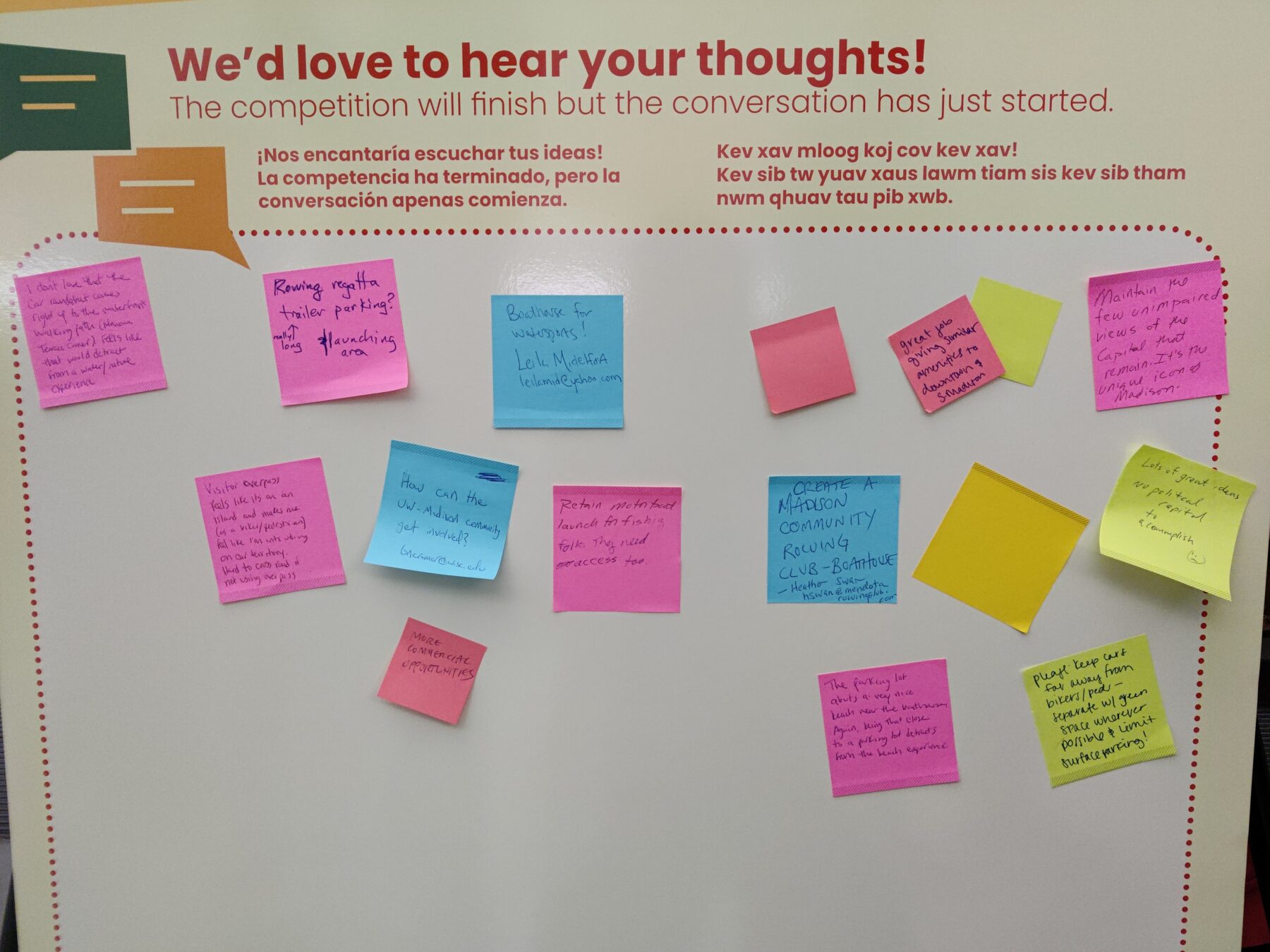
During the public meetings, Sasaki asked community members for feedback
Sasaki will now work with the City of Madison to develop a master plan for Lake Monona, with the goal of completing the plan in September 2023.
To learn more about Sasaki’s vision, watch the video below:
Sasaki designers reveal their proposal for the Lake Monona Waterfront Design Challenge in Madison, WI
Sasaki has been selected as one of three teams competing for a once-in-a-generation opportunity to shape the future of Madison, WI’s urban waterfront